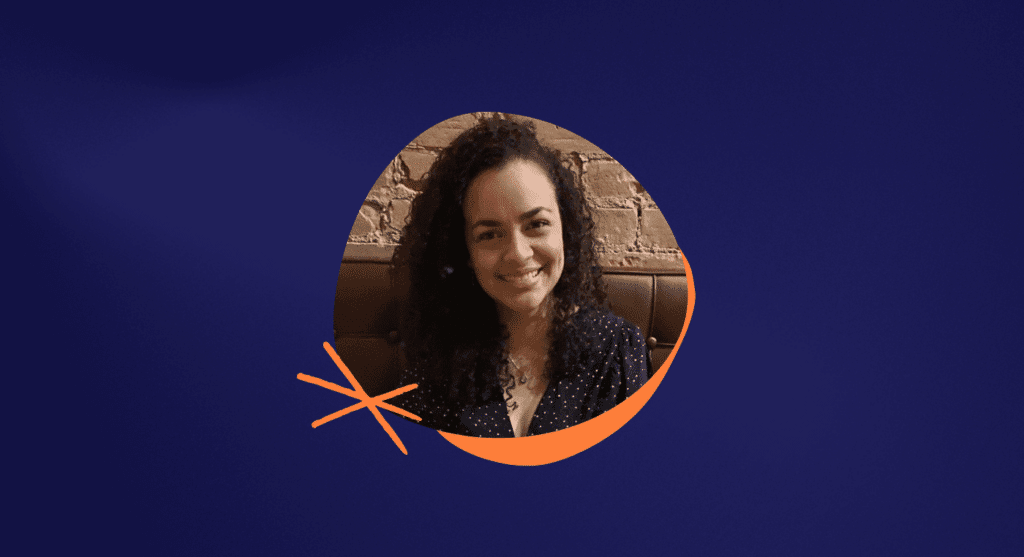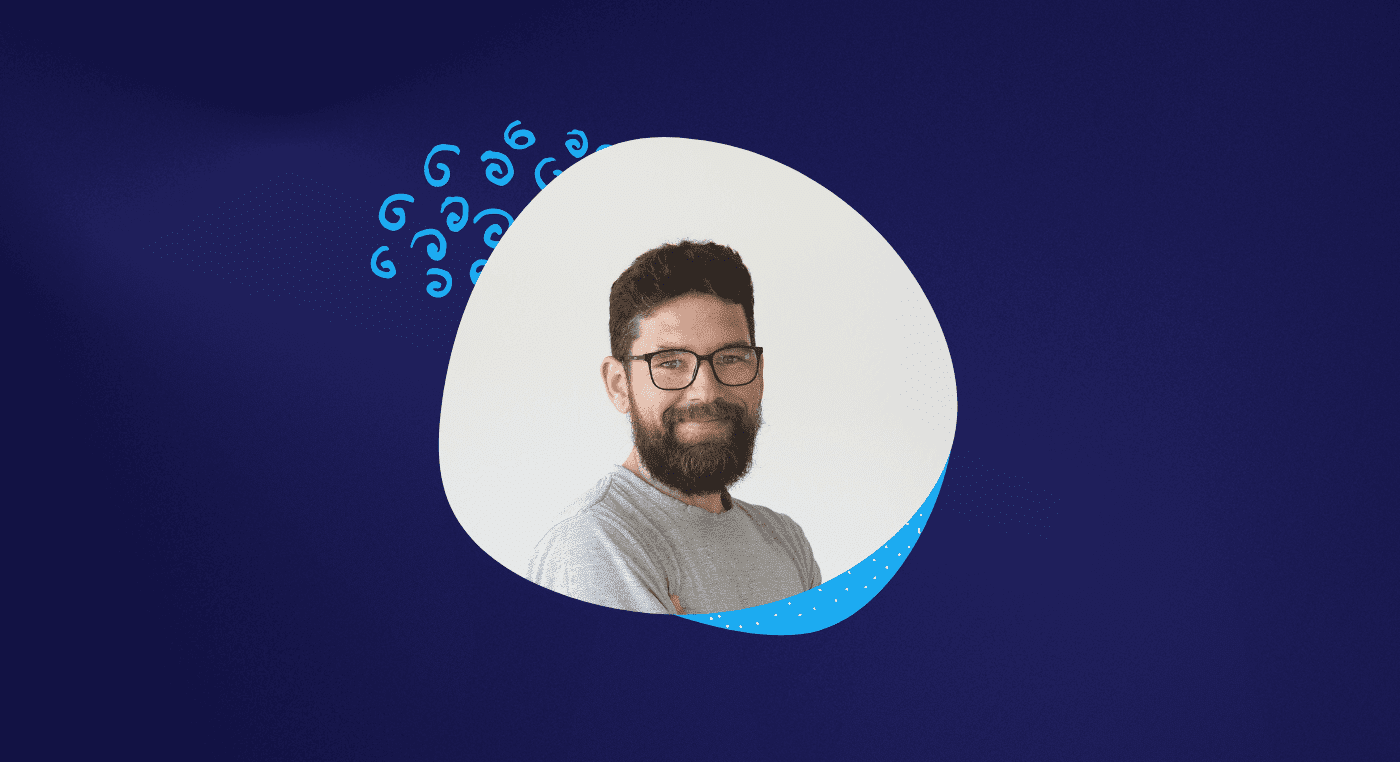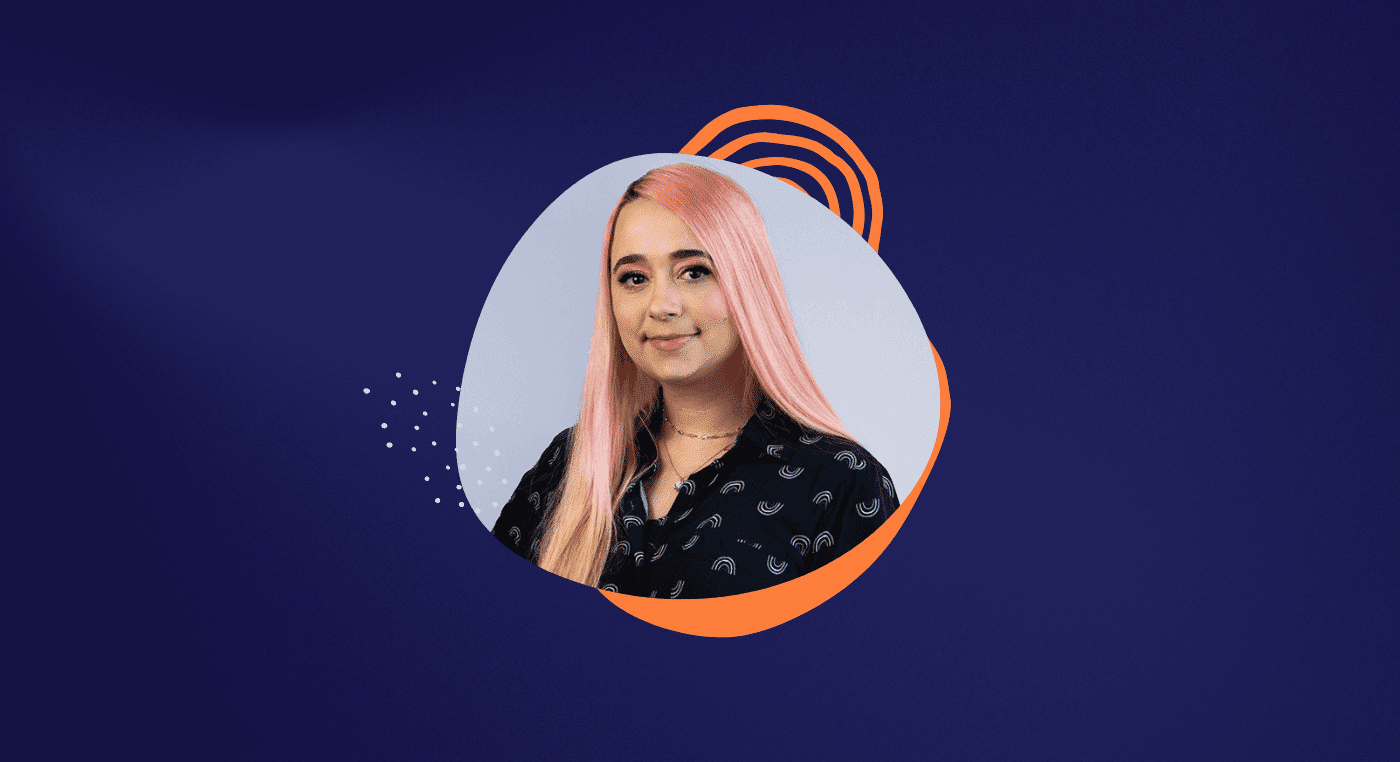In this interview, you will discover the inspiring story of Lívia, a Biology graduate who decided to pursue a completely different career: UX Design.
Lívia shares her challenging journey of making this life-changing decision and her determination to learn and explore the new field.
Furthermore, Lívia talks about her experiences in the Mastering Interface Design (MID) program and how she joined the Aela community. She shares her insights on organizing a study schedule and balancing coursework while pursuing her career goals.
If you’re interested in transitioning to UX Design from any background, Lívia’s story will surely inspire and encourage you to take the next step.
Are you also interested in pivoting to UX or Product Design? Subscribe to our newsletter and stay updated for upcoming classes!
Lívia, to get us started, please tell us a little bit about yourself
My name is Lívia, I’ve been living in Canada for 5 years. I majored in Biology and then pursued a master’s degree in “History and Philosophy of Biology.” It’s pretty random, but some people are interested in this subject, and I was one of them!
In the same week that I defended my Master’s thesis, I moved to Canada and opened my eyes to new opportunities here.
Amidst this craziness, I found UX Design, and today I work as a UX Researcher in a bank in Canada.

Why did you decide to change careers completely? I believe it was not an easy decision
It was not easy at all. Just before I finished my Master’s, I realized that the academic field was not for me. I wished to learn more about applied research.
So as soon as I finished my master’s, I moved to Canada. I chose Toronto because I had plans to earn a Ph.D. at the University of Toronto in a specific research program.
But once I realized that biology wasn’t for me, I decided to look at Canada as a new opportunity.
So I worked with different things, like every immigrant. But after two years of living in Canada, only working to pay my bills and nothing else, I stopped to do some research and think about my career.
Within my research, there were things related to Biology, but I felt this was not the way to go. So I researched professions that would be in high demand.
I did find materials on information technology and software engineering, but those things didn’t really have much to do with me.
It was then that I decided to take a course on data analysis, and I liked it a lot. And it was in this course that I met people who studied UX Design and noticed how interesting UX is.
I realized that UX Designers need two main characteristics:
- to be very analytical, reflecting on how to solve problems;
- creativity.
This is how I decided to study UX Design and began researching various courses. In Toronto, outside Toronto, and in Brazil.
That’s how I learned about Aela and began my studies in the MID program.
Reading Tip: The Importance of Psychology in UX Design
How did you organize your studies? It was a whole new world; how did you manage to learn all these new things?
When I was searching for UX Design courses, I got in touch with the students of the courses I was interested in.
I received great feedback from the Aela students, so I chose to enroll in the MID program.
Besides that, I exchanged a lot of ideas with them about the studies, so I knew roughly what the methodology was like and how to organize myself.
Still, in the beginning, it was challenging because it was, and still is, a matter of my own insecurity of not having come strictly from UX or Design.
Today, I have co-workers who have been trained in Interaction and UX programs, attended design schools, and all that.
But my background is in Biology, I didn’t know much, including the jargon and principles of the design itself.
I thought the focus of UX was design, like colors, fonts, and so on. Although I knew there was a lot about problem-solving, I was still quite insecure because of my background.
Anyway, back to my studies, by this time, I was still working full time and only had the evenings to study.
So, in the beginning, it was tough. But consistency and resilience kept me going. This was a piece of advice I got from other Aela students.
I had a lot of things to study, maybe more than other students, but I always kept moving forward. I had a routine, especially on Saturday mornings, I would go to the library and spend the entire morning studying. I’d go even in the winter, in the cold, with snow.
But that was it, consistency made all the difference. Besides, of course, the videos and support materials too.

It’s really hard. Many people have impostor syndrome, and feeling insecure is quite normal.
I see many people from other fields improving much faster than those who came from Design precisely because they have this insecurity and want to study harder. I think it’s important to point this out.
When I joined the MID, I saw many students from fields related to UX, like Graphic Design or Interaction Design. And there I was, from Biology.
Another great thing about Aela is the community. Everybody exchanges ideas and recommends materials, which was one of the reasons why I chose Aela – the community.
Anyway, seeing everyone with a design-related background got me worried. I was learning little by little, though.
I remember there was a class on Grids, and I was desperate! What was I getting myself into? But, as you (Felipe) said, I had to sit down and study. Not only Grids but other things as well.
I think the message for people like me who come from Biology or other areas is that your different background, at some point, will help you.
And you learn. There are many subjects and content to cover, but if you consistently devote yourself to it, you can certainly learn it all.
Reading Tip: CSD Matrix: A Tool To Boost Your Project
You mentioned the Aela community. Do you have any advice for those who have just joined the community and are still learning about it?
I think it’s important to follow what people are discussing and to look a bit at other people’s presentations and their stories. That really helped me calm down.
Another thing, there is an opportunity section there. This channel is very good to follow if you are new.
There are so many opportunities that pop up there, this gives you hope that one day it will be your turn, that you will make it.
You see someone you know posting about a job position, and you can easily reach out to them. So, being active in the community is essential. Follow up.
Another thing is to be proactive. Through the MID, I met people who also live here in Canada. I even joined a WhatsApp group of Brazilians who work with design and communication.
So, it is not just about following what is happening in the community. You have to make connections.
There are many interesting people from diverse backgrounds, and I think it’s worth looking for these people and talking about what you are looking for.
It’s also a really good way to learn from other people’s experiences. Don’t be embarrassed because everyone is in the same boat: start a career in UX Design.

Attending live classes and turning on the camera are important too. People will remember you. If you are not present, they will not remember you. And that counts.
The MID is very hands-on, with projects that are not simple. How did you overcome fear and effectively develop complex projects?
It is challenging because sometimes you feel insecure, and you feel like you don’t know where to go. You receive the briefing for your first project and don’t know what to do.
But what helped me was to remember what all the mentors told me. Take one step at a time. In the beginning, focus on research.
The community helped me a lot too, by sharing tips about organizational tools, for example. Because of these tips, I began to use Notion to organize myself. This helped me tremendously in my studies and the MID projects.
I think what helped me the most was to be patient and make the best of the mentors’ feedback on the projects.
I would do my best, and if I realized that I was stuck at some stage, I would ask the mentors for feedback. While waiting for their response, I would work on other things, like studying and watching the classes.
Having their support was a lifesaver. It’s like having a co-worker by your side to ask for an opinion or to make things clearer. It’s amazing.
When did you realize you were ready to take a chance at UX?
Things happened faster than I expected, actually. I was prepared to follow the advice of Aela’s mentors, which was to accomplish more than one MID project and go all the way to level 3 because then I would be more familiar with the concepts, tools, and everything.
That was my idea. To keep working at the old job and keep studying. I already knew I was keen on UX research. I even told the mentors I wanted to focus on research during my studies.
Then, in the middle of my studies, during the first project, a friend told me they were going to open internship positions at the bank. And there was one for an internship in UX Research.
I took a moment to reflect on the salary I was earning at that time and to think things through. I decided to apply for the position, at least to have the interview experience. But I did not pass!
The first opportunity
Then two months later, I saw there was another opening. I applied again, went through 2 interviews, and was offered this internship opportunity.
That’s when things changed. I left my job, and surprisingly, the internship position as UX Researcher paid better than my old job. UX is so highly valued that you may be surprised by the salaries, even if it is an internship.
I would have liked to go further in the MID program, but I decided to try for an internship at that moment. After all, my completed projects were in Notion. I already had a portfolio.
Already anticipating, having a portfolio helped me a lot. During the interview, they asked me to present the case on the spot. I opened it up, shared my screen, and began explaining what was on Notion. It was a huge help.
That was my process. I was not 100% prepared, but in a way, I had completed some levels of the MID and thought it would be interesting to try out this internship opportunity.
Reading Tip: UX Design In High Demand
What did you do to get the best out of your UX internship?
The internship contract was for 8 months. It was a very good experience, not only for the role but for the internship program itself.
We had different initiatives within the program, like doing innovation challenges. They also encouraged us to have video calls with other people to get to know each other.
But regarding my position, I think what helped me most was proactivity. I think this is a common trait among Brazilian immigrants. This idea that we need to develop ourselves and be recognized for our work to make it abroad.
So, in every meeting, I made sure to contribute with some comments, be proactive, and suggest research projects too. There was a situation in which I was in a project presentation, and one of the main research findings could be further explored in new research projects.
We could investigate something based on another discovery that was being presented there. I noticed it and talked to my colleague privately, suggesting it would be interesting to conduct additional research.
He praised my idea and went to talk to his boss. In the end, I joined the research project with him, and we developed it together.
So, I think being proactive, participating, and attending conferences with other professionals was essential for me to make the most of my internship.
Taking initiative
Besides, I participated in other projects of my own initiative. One thing you can do in a team is to suggest presentations on topics that interest you. Be it research about food in Japan or even things related to UX Research.
I was interested in studying more about a methodology called Card Sorting, so I proposed to my boss to make a presentation about it.
Then I presented to the whole team everything I had studied. I think this kind of thing is extremely important to show interest and reach out to people.

What advice would you give to those studying UX Design who are also passionate about research?
I would tell them to continue their studies at Aela, do the projects, and, most of all, read books! But read one book at a time. You will see that there are a lot of books on UX.
I started with Just Enough Research, which was a recommendation from people in the Aela community. People there have the most valuable tips.
So stay active in the community, and talk to people.
You have to combine the book with the field you are interested in and the subject you are studying and the MID projects, which are very practice-oriented.
Read the books, do the projects, and watch the classes. I think this combo is very powerful, whether for UX Research or UX Design.
If you could go back in time, what would you say to Lívia from the past?
I think I would tell her not to look at the MID class syllabus to check what she knows and what she doesn’t. Because you probably don’t know a lot of things, but you will eventually.
Focus on a study routine. Think of a routine that you want, that you can have. And dive into that routine.
I think establishing a study routine beforehand and being a little more strategic will help you a lot.
And don’t panic! Everything will work out, one step at a time, because things will happen faster than you think.








